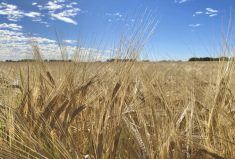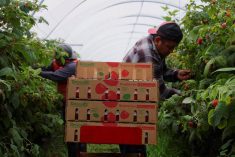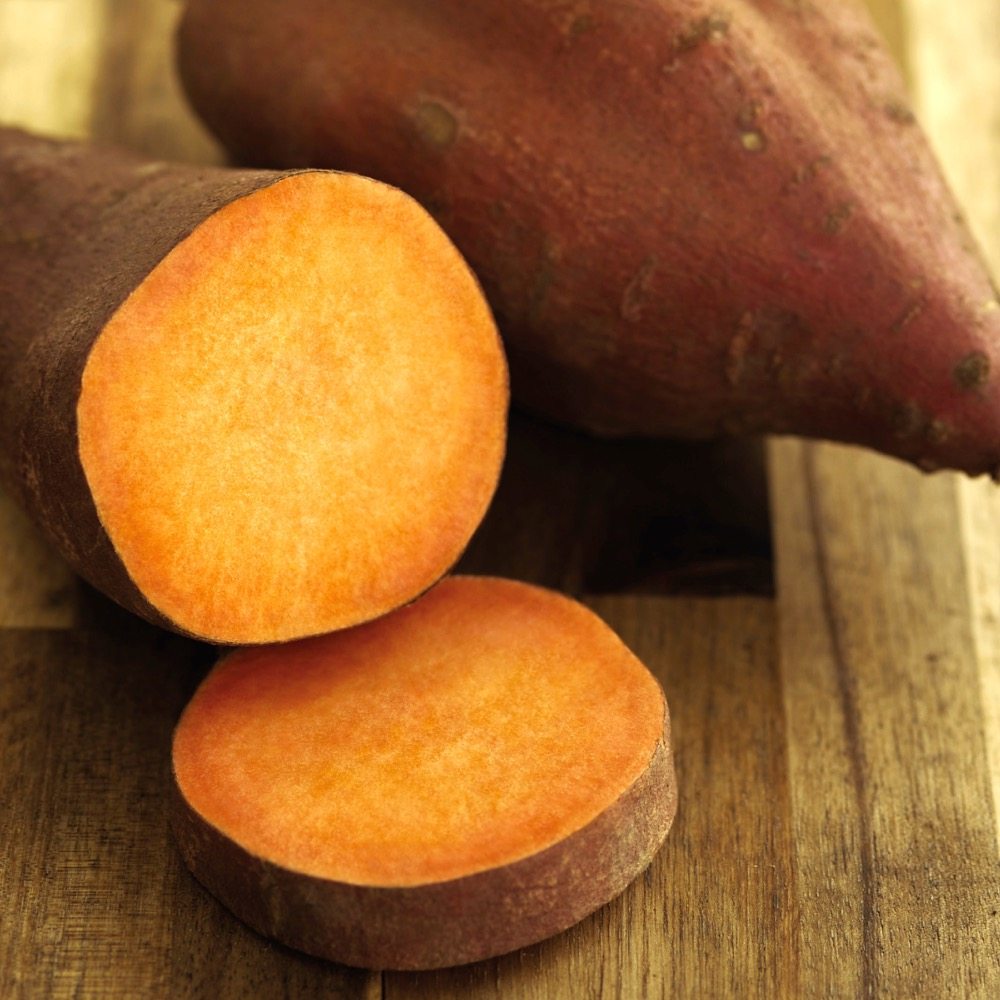When Francis Gagné’s family decided to get out of hog production, it prompted the St. Bernard, Que. farmers to go through a process to decide how it wanted to diversify.
The family had some flexibility. It continued to grow traditional cash crops and with space for 50,000 broilers, there was cash flow.
Gagné says they looked at many different options for the farm, including vineyards and fruit and vegetables, but settled on hops, a key ingredient, literally as a flavoring agent, and symbolically as a key local component in the story of the growing number of microbreweries. Soil type eliminated some farming options, and Gagné says there was growing demand and not many farmers growing hops.
Gagné’s hop production company is focused on being that local supplier, reflecting the region where the hops are grown, down to the company’s name: Houblon des Jarrets Noirs. The Jarret Noir, or Black Shanks, were identified by their muddy legs as farmers or merchants from the Beauce region who had passed through the mud and the bogs to get there.
Houblon des Jarrets Noirs is the largest hops producer in Quebec at eight hectares of production, with a plan to reach 14. They expect to transplant another 6000 plants next year and were working on the significant infrastructure to trellis and irrigate those plants during a tour for the Canadian Farm Writers Federation.

While there are about 30 producers of hops in the province, the two largest, including Gagné’s business, grow more than the other 28 combined. Gagné focuses hard on providing local hops for local microbreweries. He’s diplomatic about what is the best beer of the companies he supplies.
“Anything IPA,” he says, referring to India Pale Ales which tend to have more hops in them and therefore more bitterness. They also are usually higher in alcohol. Part of the microbrewery phenomenon is driven by beer tourism, where beer connoisseurs travel to taste and buy beer at increasingly interesting brewery sites. Gagné is finding that some of them are also interested in seeing where the hops come from so has started doing tours for the public.
Read Also

Agronomists share tips for evaluating new crop products and tech: Pt. 3
With new products, new production practices and new technology converging on the agriculture industry at a frenetic pace in recent…
Growing a completely new business takes time and Houblon des Jarrets Noirs is still in the startup phase, with the broiler chicken business and crops helping to cash flow the hops business. The transition from hogs to hops has meant to use of some new skills, including marketing directly to buyers so the family has created slick brochures and videos to market to breweries. They have built new office and processing facilities. The startup costs are so far more than double what was originally expected. Financing wasn’t too challenging to find, said Gagné, through an interpreter, as they already owned the land and the broiler operation. He is the third generation of his family on the farm.
The farm also had some location advantages, with natural gas available and a river about a mile away for the significant volume of water needed for irrigation of hops.
Current markets are microbreweries mostly in Quebec, but also in the Maritimes and also in Ontario, one cidery that makes a cider with hops, and a few buyers of the hops for creating essential oils.
They grow several varieties now, but expect to grow more to satisfy the increasingly precise demands of breweries. The varieties are sourced outside of Canada, mostly from the United States. They have also grown hops varieties from England, which have worked, but German hops varieties have not done well for them.
Outside, in the hop fields, workers from the seasonal foreign workers program, do some final cleanup of the yard. There’s a massive amount of unused foliage and vines from the process and they are composted and put back onto the fields. While workers are necessary, the harvesting process is mostly automated. A German-sourced harvester pulls the vines off the trellis, cuts them off and lays them into a wagon. The vines are then fed into a machine in a shed, like a stationary combine, that separates the buds from the vines at a rate of about 100 vines per hour. But unlike relatively dry grain that can be shaken from the stalks, the buds are harvested at 60-70 per cent moisture. The buds are then dumped into a natural gas-fed dryer that reduces the moisture to six per cent. The hops are then processed into bales, covered in plastic, which age for a month, then are vacuum sealed into five kg packs.
The fragrant hops can then be shipped to an end user, or can be stored until marketed.
Gagné says that new microbreweries continue to pop up across the country, and most of them will need hops. He plans to be their supplier, ready with the hops they need.
















